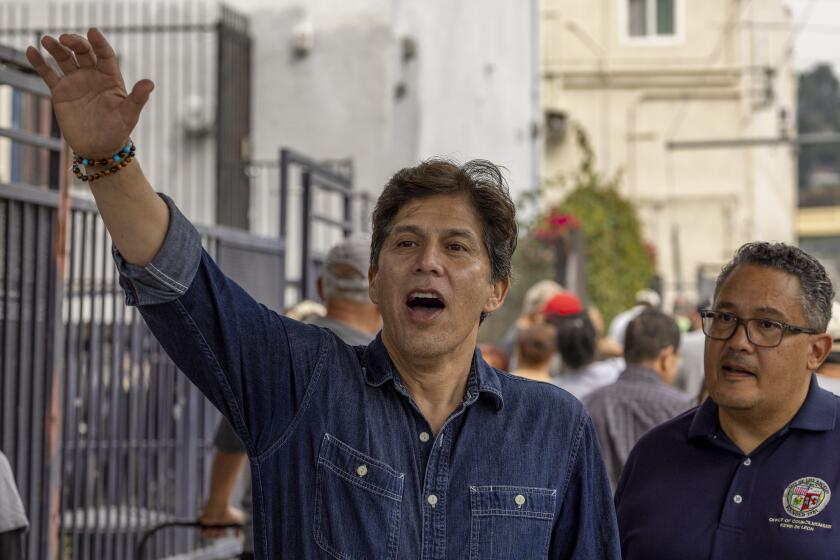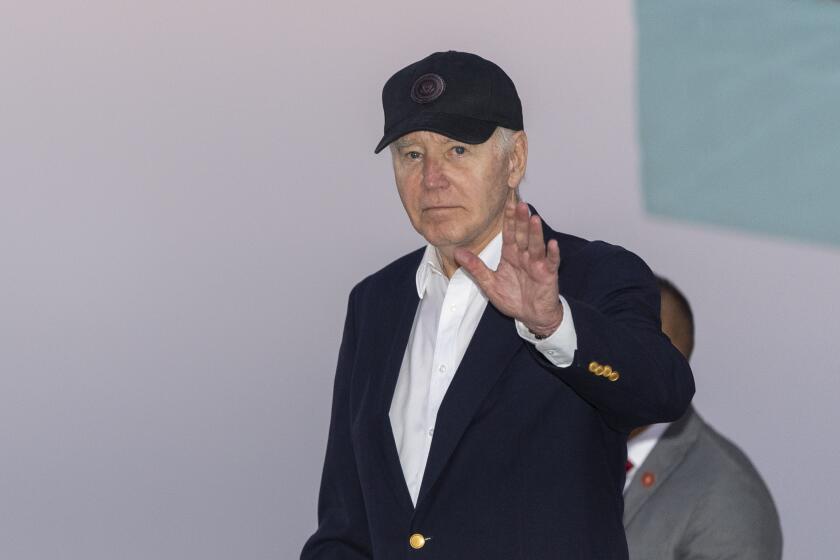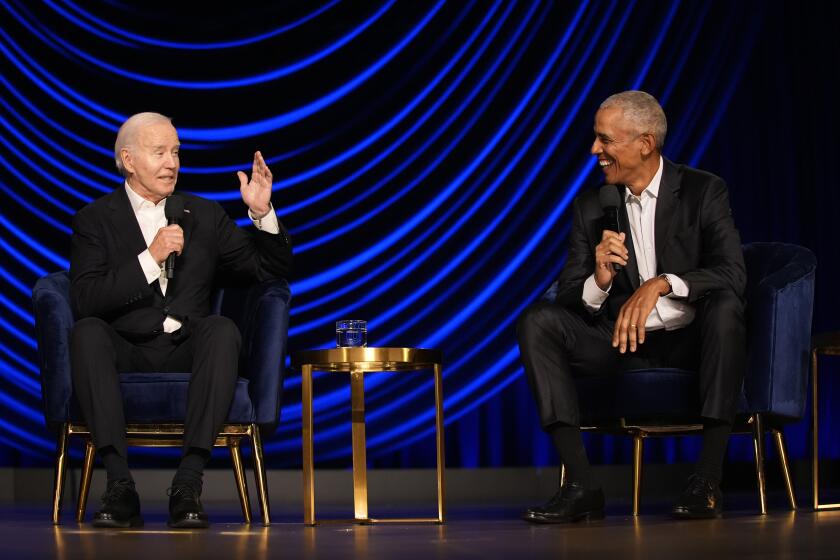Jurors Learn Too Late Value of a Mother Has Legal Cap
It was Leah Ray Jordan’s first experience as a juror, and she had looked forward to doing her duty on a medical malpractice case in Orange County Superior Court. And by the time she and the other jurors came back in April with a judgment of $10.9 million for the family of a 30-year-old woman who died in 1993 of cervical cancer, Jordan was proud of herself and her fellow jurors.
After all, they hadn’t rushed to judgment. Even though their first vote indicated all 12 believed that Friendly Hills Medical Group of La Habra had been negligent in Christina Rutledge’s death, the jurors insisted on reviewing all their notes. Then, they diligently applied a formula provided by the court to arrive at a $3.4-million award for the economic loss of Christina Rutledge.
Then, their most difficult deliberation--how to put a dollar figure on the “noneconomic” loss of companionship and love for Rutledge’s husband and 7-year-old daughter. For that, the jurors would have no charts, no tables, no legal guidelines.
“We all just sat there and looked at each other,” said another juror, Marjorie Martin of Lake Forest, “slumped in our chairs, saying how do we determine the value of a mother? There isn’t a person in the world who knows the answer to that question.”
Yet, the jurors thought, that was their responsibility. After what Jordan and Martin describe as sometimes emotional but always conscientious deliberations that stretched over several hours, the jury settled on $7.5 million--$5 million for Rutledge’s daughter and $2.5 million for her husband.
The jurors agonized especially over the sum for Caitlyn Rutledge, who was 4 when her mother died. How could they put a monetary value on a child’s lifelong loss of a mother? With no legal guidelines, the jurors talked about the kinds of things the girl could never share with her mother--from the mundane events like Brownie meetings and parent-teacher school conferences to the special ones like her first day of school or the girl’s wedding years off in the future.
As Martin said, “There wasn’t one person there who wanted to sock it to the insurance company.” In fact, the jurors even talked about the potential impact of making so much money available to a young person. Would it be helpful or harmful?
In the end, Martin said, “We worked very hard to come up with what we felt was the right amount.”
They needn’t have bothered. They needn’t have sweated over it, nor needed to hear the thoughts of another juror who had been orphaned as a child and shared his feelings. None of it mattered.
What the jury didn’t know was that state law limits the noneconomic award in medical malpractice suits to $250,000. In this case, that was 1/30 of what the jury had settled on.
The law was passed in 1975, when doctors and the insurance industry warned that runaway malpractice judgments imperiled health care by driving away both medical insurers and doctors. Although the pros and cons of the argument have been debated ever since, the law has remained virtually untouched for 22 years.
In the Rutledge case, the jury found Friendly Hills negligent for not passing on Mrs. Rutledge’s medical history to her HMO physician. She had come to the HMO from her private physician, who had recommended a follow-up pap smear. The Rutledge family attorneys sued only the HMO, not any individual doctors, alleging that a record-keeping foul-up kept Mrs. Rutledge’s medical history from reaching her new doctor. Had the records been forwarded, her attorneys alleged, her cancer would have been diagnosed earlier and increased her survival chances.
Not informing the jury of the law wasn’t unusual. Scott A. Martin, who represented Friendly Hills, noted that judges seldom inform juries about it. Some people believe that if a jury knows there is a limit to noneconomic damages, Martin said, it may over-compensate when calculating potential loss for economic impact.
Beyond that, Martin said, there are elements in any given trial, including the Rutledge case, of which a jury may not be apprised. Those judgments are made by the trial judge, he added.
Jurors like Martin and Jordan had no idea they were in the middle of a long-running skirmish between powerful interests. Doctors and insurers love the law; trial lawyers loathe it. Another effort to increase the cap, Assembly Bill 250, cleared the Judiciary Committee this year but has been tabled until next year. It would raise the cap to $700,000, according to Daniel Hodes, the attorney who represented the Rutledge family.
“The cap exists in malpractice cases and malpractice cases only,” Hodes said. “If a physician would run down someone in the street and kill them, the jury would assess the loss, and the loss would be the loss. If that same physician cuts off the wrong leg or otherwise kills someone negligently [while practicing], the law has predetermined artificially that the survivors only get $250,000.”
As for jurors like Martin and Jordan, they feel somewhat duped.
“If we had been told we could only give $250,000, we would have done that,” Jordan said. “That’s what angered me. We really worked hard as a jury to come up with something that we could all agree on and give as our verdict. Then to be told it didn’t matter what we did, here it is, folks. . . . We were trying to do our best for the jury process to work. It seems to me you need those kind of facts in front of you if you’re doing an honorable and just job. What you’ve done is deliberate and spent time thinking, when in essence everyone else knows it’s a done deal.”
No one on the jury, the two women said, suggested a figure as low as $250,000. It probably won’t cheer them to learn, then, that Friendly Hills plans to appeal the $3.4 million the jury awarded for economic losses.
Dana Parsons’ column appears Wednesday, Friday and Sunday. Readers may reach Parsons by writing to him at The Times Orange County Edition, 1375 Sunflower Ave., Costa Mesa, CA 92626, or calling (714) 966-7821.
More to Read
Start your day right
Sign up for Essential California for news, features and recommendations from the L.A. Times and beyond in your inbox six days a week.
You may occasionally receive promotional content from the Los Angeles Times.






